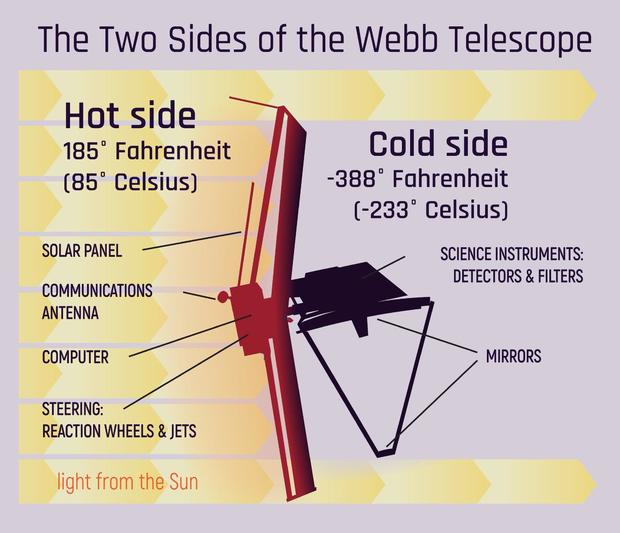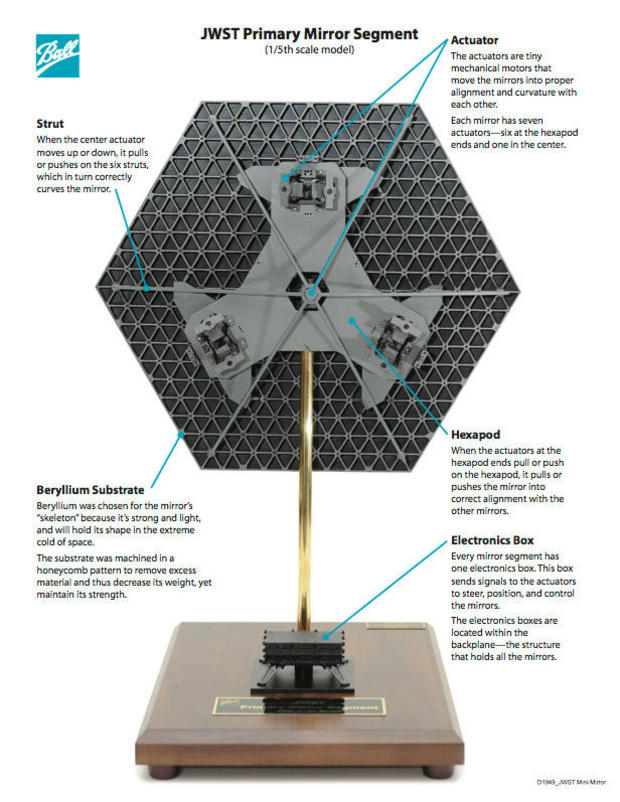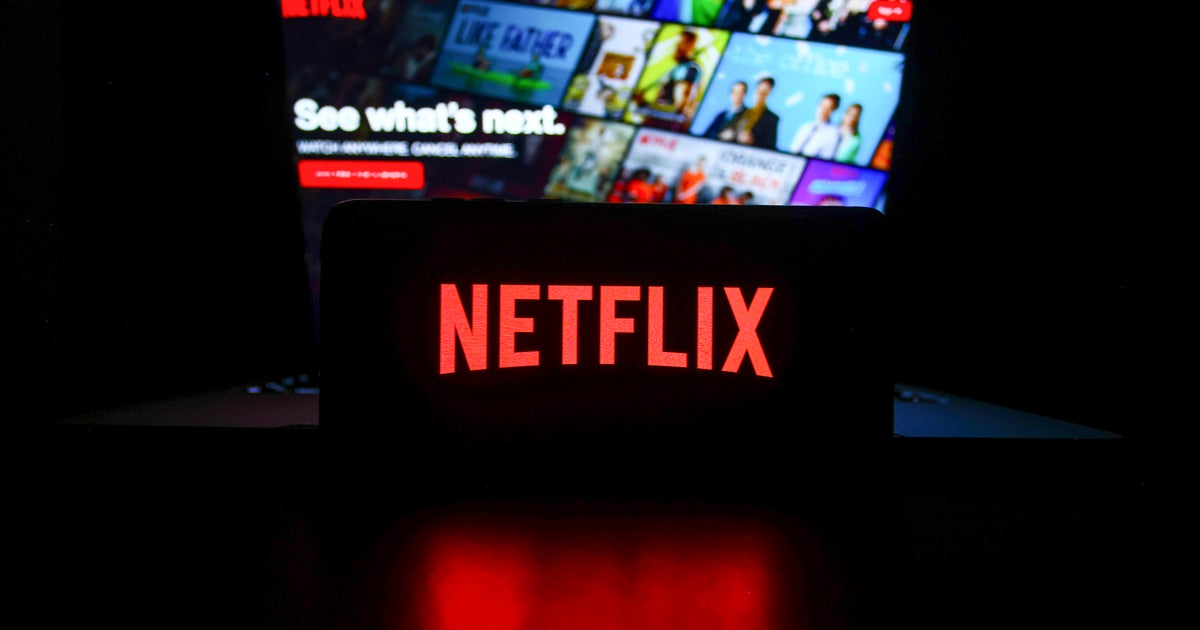Webb space telescope nears its destination almost a million miles from Earth, ready for critical mirror alignment
Thirty days outbound from Earth, the James Webb Space Telescope will slip into its parking orbit nearly a million miles away on Monday, an ideal spot to scan the heavens in search of faint infrared light from the first generation of stars and galaxies.
But getting there — and successfully deploying a giant sunshade, mirrors and other appendages along the way — was just half the fun.
Scientists and engineers now have to turn the $10 billion Webb into a functioning telescope, precisely aligning its 18 primary mirror segments so they work together as a single 21.3-foot-wide mirror, by far the largest ever launched.
Earlier this week, engineers remotely completed a multi-day process to raise each segment, and the telescope's 2.4-foot-wide secondary mirror, a half-inch out of the launch locks that held them firmly in place during the observatory's Christmas Day climb to space atop a European Ariane 5 rocket.
Now fully deployed, the 18 segments currently are aligned to within about a millimeter or so. For the telescope to achieve a razor-sharp focus, that alignment must be fine-tuned to within 1/10,000th of the width of a human hair using multiple actuators to tilt and even change a segment's shape if required.
"Our primary mirror is segmented, and those segments need to be aligned to a fraction of a wavelength of light," said Lee Feinberg, optical telescope element manager at NASA's Goddard Space Flight Center. "We're not talking microns, we're talking a fraction of a wavelength. That's what's tricky about Webb."
Powerful enough to detect the heat of a bumble bee as far away as the moon
Once aligned and its instruments calibrated, Webb will be 100 times more powerful than Hubble, NASA says — so sensitive to infrared light that it could detect the faint heat of a bumble bee as far away as the moon.
Each mirror segment was ground to a prescription that takes into account the deforming effects of gravity on Earth and their expected shrinkage in the ultra-low-temperatures of space. They were so precisely figured that if one was blown up to the size of the United States, the 14,000-foot-high Rocky Mountains would be less than 2 inches tall.
But If Webb was aimed at a bright star today, the result would be 18 separate images "and they're going to look terrible, they're going to be very blurry," Feinberg said in an interview, "because the primary mirror segments aren't aligned yet."
That's the next major hurdle for the Webb team, mapping out and then tilting each segment in tiny increments, merging those 18 images to form a single exactly focused point of light. It's an iterative, multi-step process expected to take several months to complete.
But first, the telescope must get into orbit around Lagrange Point 2, 930,000 miles from Earth where the gravity of sun and Earth combine to form a pocket of stability that allows spacecraft to remain in place with a minimum expenditure of fuel.
It's also a point where Webb's sunshade, the size of a tennis court, can work to maximum advantage, blocking out heat from the sun, Earth, moon and even warm interplanetary dust that otherwise would swamp the telescope's sensitive infrared detectors.
As of Saturday, the mirror segments had cooled down to around minus 340 Fahrenheit, well on the way to an operational temperature of around minus 390, or less than 40 degrees above absolute zero.
While the cool-down process continues, a 4-minute 58-second course correction thruster firing is planned Monday at 2 p.m. EST to change the spacecraft's velocity by 3.4 mph, just enough to put it in a distant orbit around Lagrange Point 2.
If all goes well, the telescope will remain in that six-month orbit for the rest of its operational life, firing its thruster periodically to remain on station.
Getting ready to capture "'wow' images"
With the orbit insertion burn behind them, engineers will press ahead with mirror alignment, one of the most complex aspects of Webb's already complicated deployment.
Each 4.3-foot-wide hexagonal primary mirror segment features six mechanical actuators in a "hexapod" arrangement on the back side, allowing movement in six directions. A seventh actuator can push or pull on the center of a segment to ever so slightly distort its curvature if needed.
After Webb's Near Infrared Camera, or NIRCam, cools down to its operating temperature, Webb will be aimed at a bright star so the instrument can map out the reflections from all 18 segments, creating a mosaic showing their relative size and position.
The mirror segments then will be adjusted one at a time, using one actuator then another, to properly aim each one. Additional mosaics will be made as the process continues and depending on the results, the alignment process may have to be repeated.
"The big thing is getting the 18 primary mirror segments pointing in a similar way so that their images are about the same size," Feinberg said. "Some of them might be very defocused and so you might get a big spot (blurred star image) on segment 5 and a small spot on segment 3."
The goal is to tilt the segments as required to minimize the size of the defocused images and then to move the multiple reflections to the same point at the center of the telescope's optical axis, all of them stacked on top of each other to produce a single beam of sharply focused light.
"At the very top level, think of it as 18 separate telescopes aligned to about the same level," Feinberg said. "And then we will overlap 18 spots on top of each other. We call that image stacking. It is a process of tilting the primary mirror segments so that the images fall on top of each other."
The key, he said, is "you really need very good control of those actuators, very precise tilts, because we need these 18 spots to overlap each other very well."
Any given segment can lose one of its six tilt actuators with no impact. Even the loss of a center actuator can be compensated for to some degree by moving the segment up or down slightly.
But exhaustive testing on the ground showed the high-tech actuators are extremely reliable. The procedures were tested before launch using a sub-scale model of the telescope and Feinberg said he's confident the alignment process will work as planned.
"When will we have an image of a star that's phased? I think that's going to be sometime in March, maybe late March," he said.
"But then the next question is, when will we have the telescope fully aligned, including the secondary mirror, optimized for all the four instruments? The original plan had us achieving that a full four months into the mission. So that would be like the end of April."
That still won't be enough for science observations to commence.
Once the optical system is aligned, the team will focus on testing and calibrating NIRCam, a combination camera and spectrograph, and the telescope's three other spectrographic instruments, one of which includes the fine guidance sensor needed to keep Webb locked on target.
That process will take another two months or so to complete. Only then will focused "first light" images be released to the public.
"We want to make sure that the first images that the world sees, that humanity see, do justice to this $10 billion telescope and are not those of, you know, hey look, a star," said Jane Rigby, Webb operations project scientist at Goddard.
"So we are planning a series of 'wow' images to be released at the end of commissioning when we start normal science operations that are designed to showcase what this telescope can do ... and to really knock everybody's socks off."







